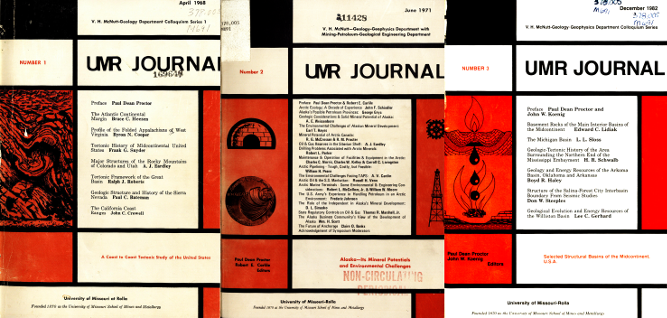UMR Journal -- V. H. McNutt Colloquium Series

Publication Date
01 Apr 1968
Abstract
The Sierra Nevada is a huge block of the earth’s crust that has broken free on the east and has been tilted westward. It is composed chiefly of Mesozoic granitic rocks and Paleozoic and Mesozoic metamorphosed sedimentary and volcanic rocks. The granitic rocks constitute the Sierra Nevada batholith, which is part of a more or less continuous belt of plutonic rocks that extends northward from Baja California through the Sierra Nevada at a small angle to the axis of the range and into western Nevada. The batholith is localized in the axial region of a complexly faulted synclinorium. It is composed chiefly of rocks that range in composition from quartz diorite to alaskite but includes scattered smaller and darker masses of mafic igneous rock and remnants of metamorphic rocks. The granitic rocks are in discrete plutons that range in outcrop area from less than a square mile to 500 square miles or more. Isotopic dates indicate three widely separated episodes of magmatism at 183 to 210 m.y. ago, 124 to 136 m.y. ago, and 80 to 90 m.y. ago. Other magmatic episodes doubtless have occurred.
During and following the emplacement of the granitic rocks, the Sierra Nevada region was uplifted and eroded to great depths. Following a period of virtual standstill during most of the Eocene and the Oligocene, the range began to tilt westward, and during the Pliocene the east side was uplifted by tilting to its present great height. Faulting along the east side of the range generally lagged behind westward tilting. As a result of uplift, the rivers that drain the west slope were deeply incised. During the Pleistocene, the range was repeatedly glaciated. Glaciers sharpened ridges and peaks and widened and deepened stream valleys, producing much of the spectacular scenery of the range.
The root beneath the high Sierra Nevada extends to a depth of more than 50 km and probably originated during the Mesozoic when the synclinorium was formed and the granitic rocks emplaced. Granitic magmas are pictured to have formed repeatedly during the Mesozoic as a result of depression and thickening of the relatively fusible and radioactive upper crust.
Document Version
Final Version
File Type
text
Language(s)
English
Rights
© 1968 University of Missouri--Rolla, All rights reserved.
First Page
121
Last Page
132
Recommended Citation
Bateman, Paul C.
(1968)
"Geologic Structure and History of the Sierra Nevada,"
UMR Journal -- V. H. McNutt Colloquium Series: Vol. 1, Article 8.
Available at:
https://scholarsmine.mst.edu/umr-journal/vol1/iss1/8


